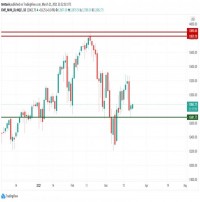|

In Family Office Anonymous we speak with family office leaders and principals who want to share their thoughts, reflections and experiences with a greater audience while making sure their identity is protected. Contact Matthias Knab using Horizons@Opalesque.com if you like to be part of future columns. Matthias Knab: Which data have you digitized and why? We set out to digitize all asset related data, so all documentation, contracts, bank statements, invoices, tax statements, internal notes, and so on) from internal file cabinets, and, equally important, from suppliers and different service providers, including banks, notaries, legal and tax advisors, authorities, and so on. The project took us roughly two years from start to finish. When we look at the “Why?” of this project of digitizing our family office, we were really driven by various reasons and outcomes we wanted to achieve: 1. Centralization: Having all relevant asset related data in one place. 2. Independence: Regaining, at least potentially, independence from certain providers in our broader eco-system. 3. Information & Organization: Getting a complete historical and current overview, and also structuring data and separate the relevant from irrelevant data. 4. Conservation: With digitizing records we also want to ensure document readability and prevent print quality from fading. 5. Information Management: Having easier access to data. 6. Control: Implementing authorized access on a need-to-know basis. 7. Analysis and Intelligence: Creating and using our own data pools to be able to build our own data models which then allows for scenario building and simulation. Matthias Knab: How did the project look like and who was involved? We used a standard data repository software and adapted it to fit our requirements for a modern graphical user interface, secure cloud storage, security gateways and scenario engine. As you would imagine, this required a sizeable interdisciplinary team of IT architects, cybersecurity specialists, programmers, project management, and more. For data input we involved all internal family office staff and also from our broader eco-system staff (banks, advisors, providers and also some family members). We also employed scanning and picture enhancement specialists. Matthias Knab: Can you describe what you have implemented? How does the technical structure of your digitized family office look like? I think we are privileged to be able to work now with a fully integrated, unique and customized family office data repository with a two layer authorized access infrastructure. We are using secure cloud data storage, facilitating the collaboration of our family office staff with the eco-system. We have also very clear, defined and transparent procedures and operations to include and gradually delegate to the next generation. One of the key aspects is that now we ourselves control and steer all family office relevant data. We are able to provide documents on a need-to-know basis and have the capability to simulate future scenarios influenced by geo-economical, internal, legal and regulatory changes. The technical structure consists of secure notebooks, secure smartphones, security gateways to encrypt all data and an external cloud provider. Matthias Knab: What has this project enabled? How differently are you operating now? One important aspect is that we now feel we have?a much higher degree of security around our data. As we all know, any loss or manipulation of data can have devastating consequences. More, we also found that we reduced IT and office operational costs. Again, we strongly felt that we ourselves – the family and family office principals – needed to regain control over the documentation in our eco-system. As much as we may love our trusted advisors, we felt it could turn out to be imprudent to rely on their safekeeping of vitally important documents relating to assets or contracts. From a technical perspective, I would add that a significant enabler for the whole project was the market availability of strong encryption of data in a cloud. We also find that now we are working faster, better and more secure with our eco-system. We have a much better overview of our assets, and less effort is needed in dealing with things like regulation and authorities. When it comes to the actual management of our assets, we can better and more frequently (up to daily or intra-day) evaluate our portfolio. We can quicker and more effectively react to external and internal changes and can better plan for the future. While the digitization project was of course a financial investment and required a major commitment of time, it also resulted in significant reductions of family office operations costs. We can now also securely allow our staff to work from different locations, especially where they are closer to the core of the managed asset. Matthias Knab: What were some of the challenges you ran into? That’s a good question. We actually underestimated the reluctance of the eco-system to provide documents from their own file cabinets. The fear was that that once they give up the files, they could then be more easily exchanged for a competitor. They now see that they work faster and more effective with us and that their expertise is the relevant factor for us instead of their “storage capacity“. And the time and costs involved when switching to a new provider has significantly been reduced. Matthias Knab: What would be your recommendations for families that decide to embark on the same task of digitizing their family office? Of course, each family is different and operates under different conditions, but the following hints may be helpful to keep in mind:
While Family Office Anonymous respects the confidentiality of our interview partners and contributors, the principal of this family office has signaled his openness to answer questions from peers (single or multi family offices) regarding a family office digitization project. Please email Matthias Knab using Horizons@Opalesque.com your email will then be confidentially forwarded.
| ||||
|
Horizons: Family Office & Investor Magazine
Family Office Anonymous: Digitizing your FO - Getting back control of your asset related data |
|





 RSS
RSS








